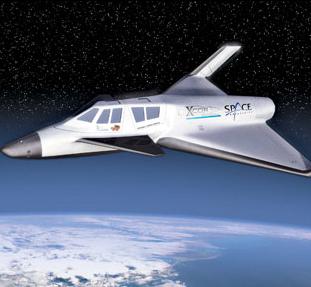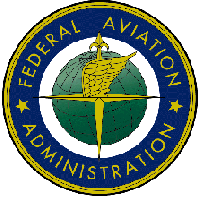Group Demands More Commercial Access To Space
A group of space activists, led by a new sub-orbital industry
organization, stormed Capitol Hill earlier this month, hoping to
talk to legislators about regulatory reforms to help promote the
incipient suborbital reusable launch industry.

About a dozen member of the newly-formed Suborbital Institute
went door-to-door to more than two dozen members of Congress during
the one-day event, wryly dubbed "Love & Rockets" because of the
event's proximity to Valentine's Day and the strong interest the
organization's members have in suborbital spaceflight.
SI To Congress: Ease Up!
The goal of the Suborbital Institute's first Congressional
briefing was to let Congress know about the efforts of a number of
entrepreneurial companies trying to develop reusable vehicles
capable of suborbital spaceflight. The Institute expedition also
hoped to ease the regulatory hurdles that lie in the path of these
firms.
Suborbital spacecraft are vehicles that fly into space,
typically to altitudes of at least 100 kilometers, but do not
travel fast enough to attain orbit. Currently only unmanned
sounding rockets perform suborbital flight, but a number of
companies, primarily small entrepreneurial efforts, are currently
developing reusable, manned spacecraft for suborbital flights.
 This new push for manned suborbital spaceflight
comes mainly from two sources. One is the X Prize, a $10 million
competition to develop the first reusable suborbital spacecraft
capable of carrying three people to an altitude of 100 km twice in
a two-week period. The other has been the collapse in demand for
commercial launches, driven by the failure of ventures like Iridium
and Teledesic, forcing companies that were once interested in
developing orbital reusable launch vehicles (RLVs) to explore
suborbital markets.
This new push for manned suborbital spaceflight
comes mainly from two sources. One is the X Prize, a $10 million
competition to develop the first reusable suborbital spacecraft
capable of carrying three people to an altitude of 100 km twice in
a two-week period. The other has been the collapse in demand for
commercial launches, driven by the failure of ventures like Iridium
and Teledesic, forcing companies that were once interested in
developing orbital reusable launch vehicles (RLVs) to explore
suborbital markets.
While suborbital spaceflight has been most closely linked to
space tourism, there are a number of other markets for such
vehicles. A report by the Department of Commerce published last
December identified a number of possible uses for suborbital
spacecraft, from microgravity experimentation to remote sensing.
Suborbital vehicles also provide "an incremental approach that will
lead to commercial orbital RLVs," said Paula Trimble, an analyst
with the Commerce Department's Office of Space Commercialization,
during a breakfast meeting that preceded the day's lobbying
efforts.
How Do You Classify That, Anyway?
 Suborbital spaceflight does bring up a number of regulatory
issues, notably with the FAA. Kelvin Coleman, special assistant for
programs and planning with the FAA's Office of the Associate
Administrator for Commercial Space Transportation (AST), said that
suborbital flight falls "right near the line of aviation
operations." This makes it unclear whether such vehicles should be
regulated like launch vehicles or like high-performance aircraft.
"We at FAA are challenged to figure out where that line is,"
Coleman said.
Suborbital spaceflight does bring up a number of regulatory
issues, notably with the FAA. Kelvin Coleman, special assistant for
programs and planning with the FAA's Office of the Associate
Administrator for Commercial Space Transportation (AST), said that
suborbital flight falls "right near the line of aviation
operations." This makes it unclear whether such vehicles should be
regulated like launch vehicles or like high-performance aircraft.
"We at FAA are challenged to figure out where that line is,"
Coleman said.
When XCOR Aerospace, a California company developing a
suborbital RLV, conducted flight tests of its EZ Rocket
rocket-powered airplane, it got an experimental aircraft license
from the FAA because it provided more flexibility than a launch
license, as each flight could theoretically require obtaining a
separate license. AST is aware of those concerns, Coleman said, and
has recently published an advisory circular explaining how the
current rules could be used by XCOR and other companies to fly test
regimes without getting a separate launch license for each
flight.
Nonetheless, one of the key talking points the Suborbital
Institute made for its day on the Hill was to promote a "flexible
model of regulation" that allows for the type of flexibility a
young industry like suborbital spaceflight needs. Pat Bahn, founder
and CEO of TGV Rockets and a founder of the Suborbital Institute,
said that he's "70 percent happy" with what the FAA has done to
date, adding that "their hearts are in the right place and they're
trying very hard."
Who'll Pay If It Falls Down?
Besides FAA regulation, another key point for the Suborbital
Institute is insurance. The current insurance environment isn't
suitable for suborbital RLVs, as launch insurance was designed for
expendable vehicles and commercial aviation insurance is unwilling
to provide enough insurance to cover the maximum probable loss
determined by the FAA. The Institute believes the federal
government should step in to help fill the gap between what is
required and what is currently offered. The Institute also
advocates the creation of multiple spaceports around the country
for use by suborbital RLVs, rather than a single national spaceport
like Cape Canaveral.
Columbia Tragedy: No Effect on Industry
 The
Institute, whose corporate members include TGV, XCOR, Armadillo
Aerospace, and X-Rocket LLC, doesn't think that the loss of the
space shuttle Columbia earlier this month will have a major impact
on their efforts. "We have a real opportunity here, better than we
had a week ago, as even in the public's eye it's clear that the way
we are developing space isn't working," said Earl Renaud, chief
operating officer of TGV. "We need to get the message out that
there are people who want to do this and they need the government's
support, or at least step back and not hinder the industry."
The
Institute, whose corporate members include TGV, XCOR, Armadillo
Aerospace, and X-Rocket LLC, doesn't think that the loss of the
space shuttle Columbia earlier this month will have a major impact
on their efforts. "We have a real opportunity here, better than we
had a week ago, as even in the public's eye it's clear that the way
we are developing space isn't working," said Earl Renaud, chief
operating officer of TGV. "We need to get the message out that
there are people who want to do this and they need the government's
support, or at least step back and not hinder the industry."
For Bahn, who started TGV Rockets several years ago as a
suborbital company when most entrepreneurial efforts were focused
on orbital RLVs, the growth in interest in suborbital vehicles has
been something of a vindication. "I've been out in the wilderness
for a while," he said, "and now I've found that it's turned into a
minor suburb."
 ANN's Daily Aero-Linx (04.16.24)
ANN's Daily Aero-Linx (04.16.24) Aero-News: Quote of the Day (04.16.24)
Aero-News: Quote of the Day (04.16.24) Airborne 04.10.24: SnF24!, A50 Heritage Reveal, HeliCycle!, Montaer MC-01
Airborne 04.10.24: SnF24!, A50 Heritage Reveal, HeliCycle!, Montaer MC-01 Airborne 04.12.24: SnF24!, G100UL Is Here, Holy Micro, Plane Tags
Airborne 04.12.24: SnF24!, G100UL Is Here, Holy Micro, Plane Tags Airborne-Flight Training 04.17.24: Feds Need Controllers, Spirit Delay, Redbird
Airborne-Flight Training 04.17.24: Feds Need Controllers, Spirit Delay, Redbird






